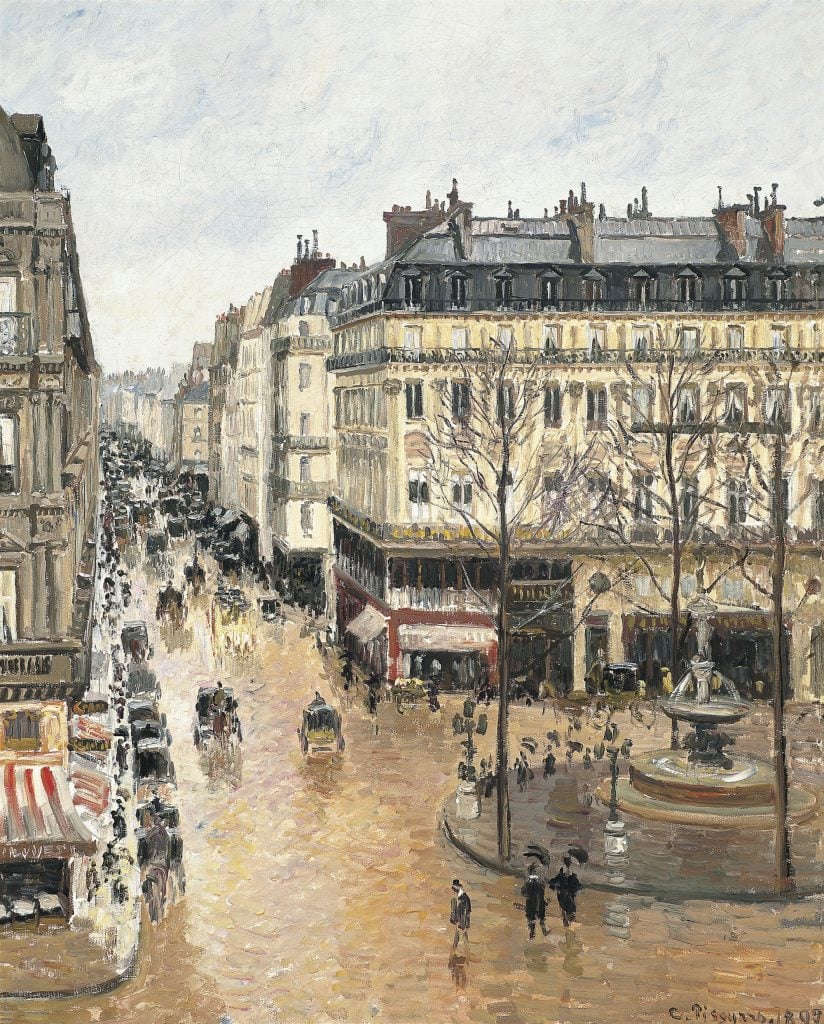Law & Politics
The U.S. Supreme Court Just Sent a Winding International Restitution Case Down to a State Court in California
The case will now be sent back to a California appeals court to be readjudicated.

The case will now be sent back to a California appeals court to be readjudicated.

Taylor Dafoe

A decades-old dispute over a valuable Camille Pissarro painting that was stolen by Nazis came one step closer to conclusion today, as the U.S. Supreme Court weight in on the case.
In a unanimous decision, the court ruled that state, rather than federal, law should apply to the case—an outcome that favors the heirs of the painting’s owner, who have long fought for the artwork to be restituted from the Spanish museum that currently holds it.
“The path of our decision has been as short as the hunt for [the painting] was long; our ruling is as simple as the conflict over its rightful owner has been vexed,” Justice Elena Kagan wrote in the court’s ruling. “A foreign state or instrumentality… is liable just as a private party would be. That means the standard choice-of-law rule must apply.”
“We are obviously pleased,” David Boies of Boies Schiller, the law firm representing the Cassirers, who have been seeking the painting for decades, said in a statement to Artnet News. “It is a great day for the Cassirer family and for all who care about justice.”

The Camille Pissarro painting hanging in the Berlin apartment of Lilly Cassirer (ca. 1930). Photo courtesy of David Cassirer.
Painted in 1897, the artwork, titled Rue St Honoré, apres-midi, effet de pluie, depicts a rainy Pairs plaza. On the eve of the Second World War in 1939, it was sold to the Nazis by Lilly Cassirer Neubauer, a Jewish woman living in Berlin, in exchange for $360 and a pair of visas for her and her husband to flee the country. She never received the money.
She looked for the painting after the war but never found it. Eventually, following a lengthy legal appeal, she accepted $13,000 settlement from the German government. Cassirer Neubauer died in 1962, though she never formally waived her right to artwork, her heirs have argued in court.
In 1976, the Swiss collector Baron Hans Heinrich Thyssen-Bornemisza purchased the Pissarro painting at a New York gallery for $275,000. Seventeen years later, it was one of 775 artworks that Thyssen-Bornemisz sold to Spain for $338 million. The collection later formed the basis of the Thyssen-Bornemisza Collection Foundation in Madrid.
It was at the museum that Cassirer Neubauer’s grandson, Claude Cassirer, discovered the painting years later. In 2005, he sued the foundation in California court, calling for the artwork to be returned to his family’s possession. Cassirer died in 2010. Since then, his son David Cassirer has continued the legal fight.
By that point, the Pissarro had been on view in Madrid for more than six years—a key distinction in the case. Under Spanish law, public possession of someone’s property for six years is enough to transfer good title, even if it was stolen.
No such statute exists in California, though, so the case boiled down to which jurisdiction’s laws would be honored in the case—those of Spain or those of California.
In 2015, a California District Court ruled in favor of Spain, and in 2020, an appeals court in the state upheld the decision. The U.S. Supreme Court agreed to hear the case late last year, and oral arguments began in January.
With today’s ruling, the case will be sent back to the 9th Circuit court of appeals in California, where it will be adjudicated by a federal judge.